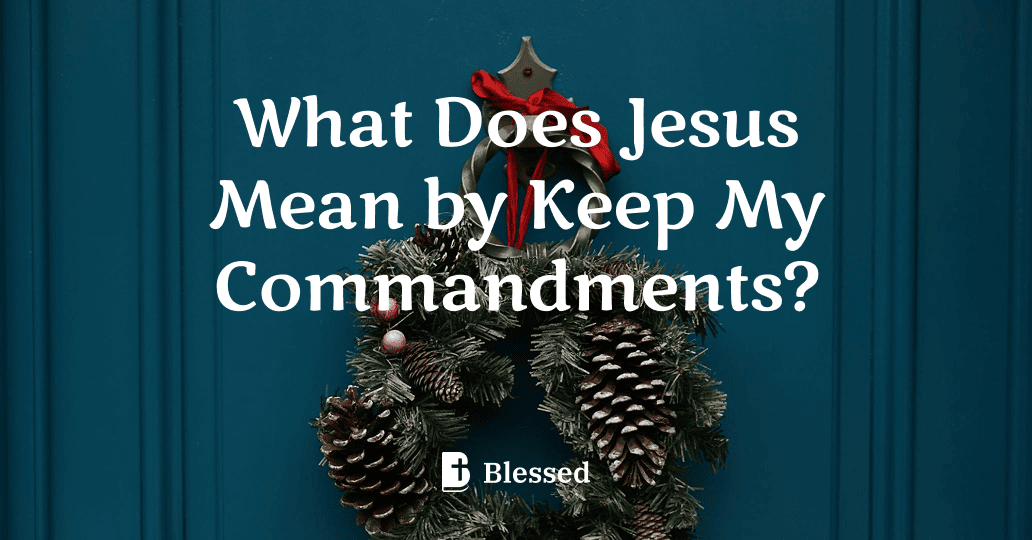What Does Jesus Mean by Keep My Commandments?
- commandments
- jesus
- love
- obedience
- god

What Does Jesus Mean by Keep My Commandments?
Understanding the Commandments of Jesus
When Jesus says, "Keep my commandments," He is inviting believers to live according to His teachings and example. Unlike the Old Testament laws, Jesus’ commandments focus on love, faith, and obedience rooted in a personal relationship with God.
The Core of Jesus’ Commandments
Jesus summarized His commandments in two main principles:
- Love God with all your heart, soul, and mind (Matthew 22:37)
- Love your neighbor as yourself (Matthew 22:39)
These commandments emphasize love as the foundation of all actions and decisions.
Living Out Jesus’ Commandments
To keep Jesus’ commandments means to:
- Follow His teachings sincerely
- Act with compassion and humility
- Demonstrate faith through obedience
- Maintain a close relationship with God through prayer and worship
Obedience is not about legalism but about reflecting Jesus’ character in daily life.
The Promise of Keeping His Commandments
Jesus assures that those who keep His commandments will experience His love and the presence of God within them (John 14:21). This obedience leads to spiritual growth and eternal life.

What Do Pictures of Jesus on the Cross Show?
What Do Pictures of Jesus on the Cross Show? The Central Symbol of Christianity Pictures of Jesus on the cross, also known as crucifixion images, are a powerful symbol in Christian art. They depict the moment of Jesus Christ's sacrifice, representing his suffering and death to redeem humanity from sin. These images serve as a reminder of faith, forgiveness, and salvation. Key Elements in the Imagery Typically, these pictures show Jesus nailed to a wooden cross, often with a crown of thorns on his head. His arms are outstretched, and his feet are fixed to the cross, symbolizing his physical pain and endurance. The Cross: Represents the instrument of crucifixion and the Christian faith. Jesus' Expression: Often portrays suffering mixed with compassion or peace. INRI Inscription: Sometimes seen above Jesus, standing for "Jesus of Nazareth, King of the Jews." Surrounding Figures: Sometimes Mary, John, or angels appear to emphasize the event's significance. The Spiritual and Artistic Significance These images are not just historical depictions but carry deep spiritual meaning. They invite reflection on themes like sacrifice, love, and redemption. Artistically, they vary from highly realistic to stylized interpretations, reflecting different cultural and theological perspectives.
Blessed App
Is Getting a Jesus Tattoo Biblical?
Is Getting a Jesus Tattoo Biblical? The Bible does not explicitly address Christian tattoos. However, two principles guide discernment: 1. Old Testament Prohibition Leviticus 19:28 warns, “You shall not make any cuts… or tattoo yourselves.” This applied to pagan mourning rituals and doesn’t directly address modern Christian symbolism. 2. New Testament Freedom Christian Liberty: In Christ, ceremonial laws give way to freedom (Gal 5:1, 13). Stewardship of Body: Believers are called to honor God with their bodies (1 Cor 6:19–20). Considerations If you choose a Jesus tattoo, ask: Does it honor Christ? Could it cause offense or distract from the gospel? Ensure the motive is worship, not vanity.
Blessed App
How Is Jesus Connected to Christmas?
How Is Jesus Connected to Christmas? The Birth of Jesus and Christmas Christmas is celebrated around the world to commemorate the birth of Jesus Christ, who is central to Christian faith. According to the Bible, Jesus was born in Bethlehem to Mary and Joseph. This event, known as the Nativity, is the foundation of Christmas, symbolizing hope, love, and salvation for believers. The Religious Significance Jesus is considered the Son of God in Christianity, and his birth represents God's gift to humanity. Christmas celebrates this divine incarnation, marking the moment when God became human to bring peace and redemption. Churches hold special services and reenactments of the Nativity scene to honor this sacred event. Traditions Rooted in Jesus’ Story Many Christmas traditions stem directly from the story of Jesus’ birth: Nativity Scenes: Displays of figures representing Jesus, Mary, Joseph, shepherds, and wise men. Carols: Songs that recount the story of Jesus’ birth and its meaning. Advent: A period of preparation and reflection leading up to Christmas. Conclusion In essence, Jesus is the heart of Christmas. The holiday is not just about festivities but about celebrating the arrival of Jesus, whose life and teachings continue to inspire millions worldwide.
Blessed App
Where Did Jesus Die?
Where Did Jesus Die? The Location of Jesus' Death Jesus died on a hill called Golgotha, which means "the place of the skull." This site is traditionally believed to be located just outside the walls of ancient Jerusalem. Today, it is within the area of the Church of the Holy Sepulchre, a major Christian pilgrimage destination. Historical and Biblical Context The Gospels describe Jesus being crucified at Golgotha, a place set aside for executions. It was common in Roman times to crucify criminals outside city walls as a public warning. The exact location has been debated, but the Church of the Holy Sepulchre is widely accepted by historians and religious scholars. Significance of the Site Religious Importance: It marks the spot where Christians believe Jesus sacrificed his life for humanity. Archaeological Findings: Excavations support the presence of a rock formation resembling a skull, which aligns with the name Golgotha. Modern Recognition: Pilgrims visit the site yearly to honor Jesus' death and resurrection. Conclusion In summary, Jesus died at Golgotha, just outside Jerusalem's walls, a location now enshrined within the Church of the Holy Sepulchre. This site holds deep historical and spiritual significance for millions around the world.
Blessed App